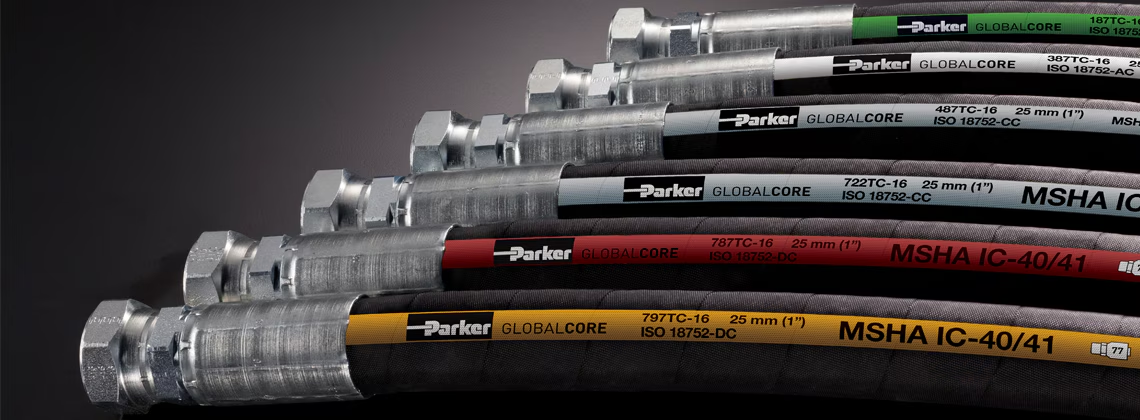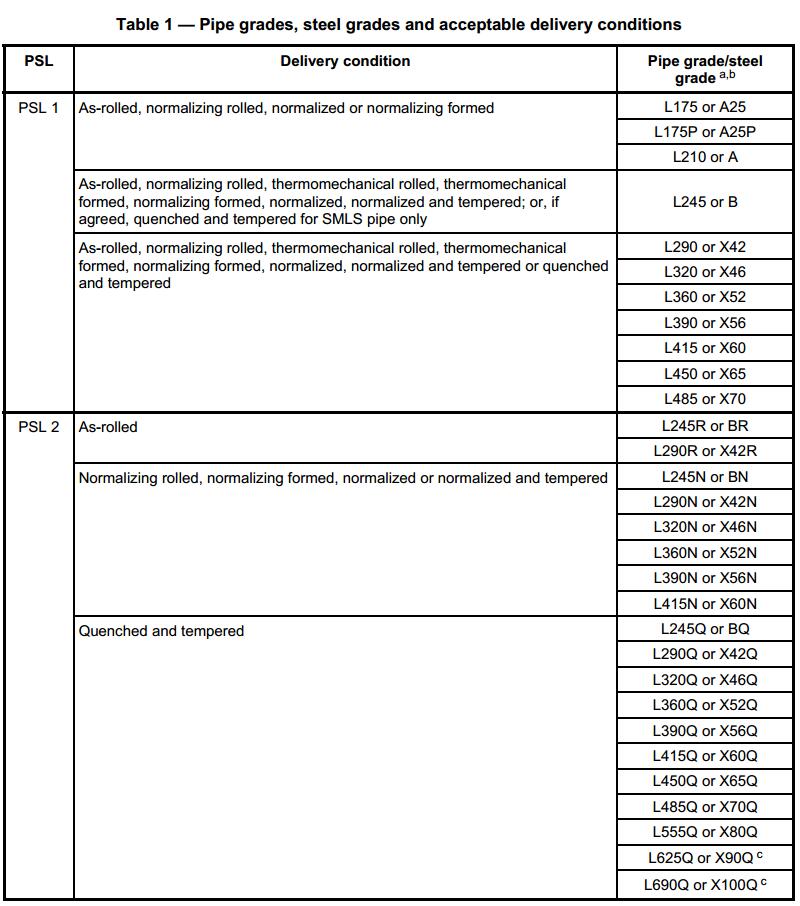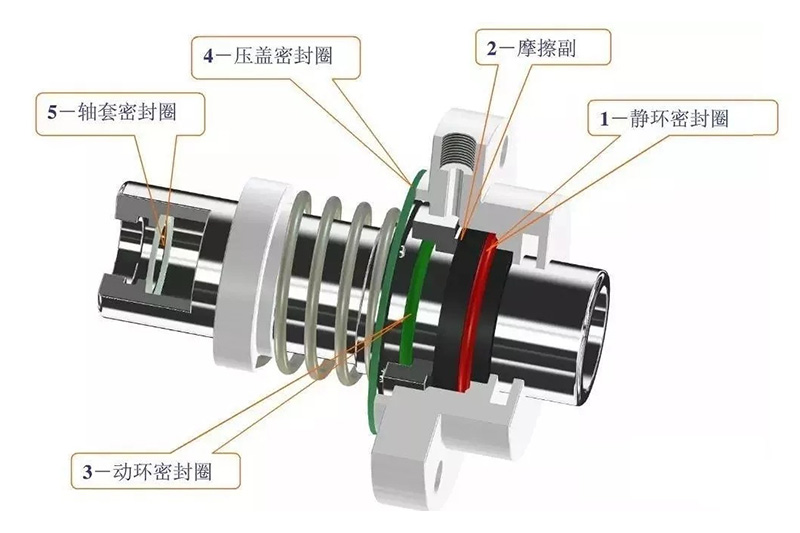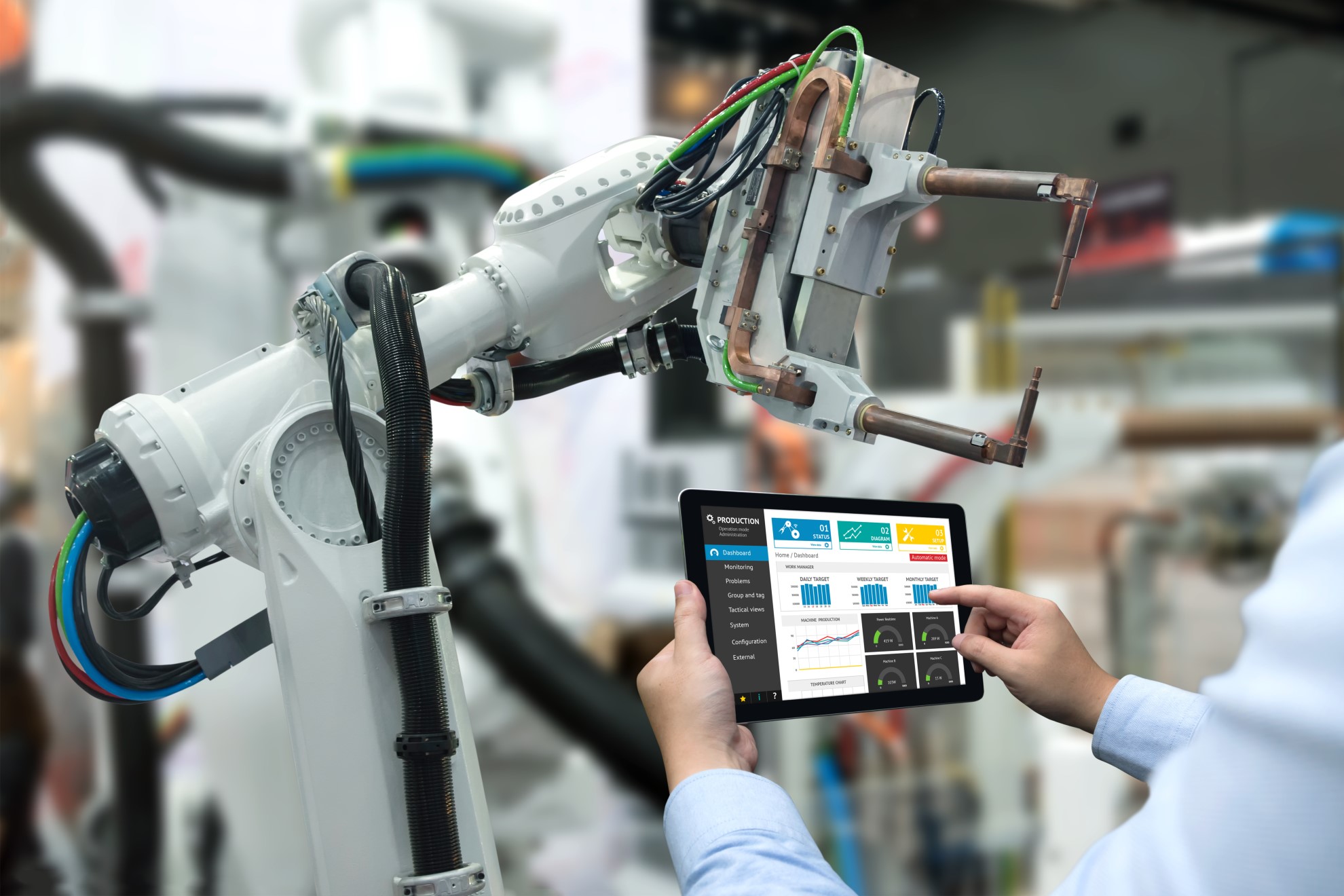液压胶管-SAE标准
Hydraulic hose - SAE standards
SAE 100R1 hose should be used with petroleum- and water-based hydraulic fluids, within a temperature range from140° to 100° C.
Type A consists of an inner tube of oil-resistant synthetic rubber, a single wire braid reinforcement, and an oil- and weather-resistant synthetic rubber cover. A ply, or braid, of suitable material may be used over the inner tube or over the wire reinforcement (or both) to anchor the synthetic rubber to the wire.
Type AT has the same construction as Type A, except AT has a cover designed to assemble with fittings that do not require removal of the cover or any portion of it.
SAE 100R2 hose should be used with petroleum- and water-based hydraulic fluids, within a temperature range from140° to 100° C. It consists of an inner tube of oil-resistant synthetic rubber, steel-wire reinforcement according to hose type, as detailed below, and an oil- and weather-resistant synthetic rubber cover. A ply, or braid, of suitable material may be used over the inner tube and/or over the wire reinforcement to anchor the synthetic rubber to the wire.
Type A has two braids of wire reinforcement
Type B has two spiral plies and one braid of reinforcement
Type AT is the same as Type A, but AT has a cover designed to assemblewith fittings that do not require removal of the cover or any portion of it.
Type BT is the same as Type B, but BT has a cover designed toassemble with fittings that do not require removal of the cover or any portion of it.
SAE 100R3 hose should be used with petroleum- and water-based hydraulic fluids, within a temperature range from140° to 100° C. It is constructed with aninner tube of oil-resistant synthetic rubber, two braids of suitable textile yarn, and an oil- and weather-resistant synthetic rubber cover.
SAE 100R4 hose should be used in low pressure and vacuum applications, with petroleum- and water-based hydraulic fluids, within a temperature range from140° to 100° C. It is constructed with an inner tube of oil-resistant synthetic rubber, a reinforcement consisting of a ply, or plies, of woven or braided textile fibers with a suitable spiral of bodywire, and an oil- and weather-resistant synthetic rubber cover.
SAE 100R5 hose should be used with petroleum- and water-based hydraulic fluids, within a temperature range from140° to 100° C. It is constructed with aninner tube of oil-resistant synthetic rubber reinforced with two textile braids separated by a high-tensile-strength steel-wire braid. All of the braids are impregnated with an oil- and mildew-resistant synthetic rubber compound.
SAE 100R6 hose (above) should be used with petroleum- and water-based hydraulic fluids within a temperature range from140° to 100° C. It consists of an inner tube of oil-resistant synthetic rubber, one braided ply of suitable textile yarn, and an oil- and weather-resistant synthetic rubber cover.
SAE 100R7thermoplastic hose (above) should be used for synthetic, petroleum-, and water-based hydraulic fluids in a temperature range from140° to 93° C. It consists of a thermoplastic inner tube resistant to hydraulic fluids with suitable synthetic-fiber reinforcement and a hydraulic fluid- and weather-resistant thermoplastic cover. Nonconductive 100R7 isidentified with an orange cover and appropriate lay line. Its pressure capacity is similar to that of 100R1.
SAE 100R8 hose is high-pressure thermoplastic hose that should be used with synthetic, petroleum- and water-based hydraulic fluids within a temperature range from140° to 93° C. It consists of a thermoplastic inner tube resistant to hydraulic fluids with suitable synthetic-fiber reinforcement and a hydraulic fluid- and weather-resistant thermoplasticcover. Nonconductive 100R8 is identified with an orange cover and appropriate lay line. Its pressure capacity is similar to that of 100R2.
SAE 100R9 hose should be used with petroleum- and water-based hydraulic fluids within a temperature range from 140° to 100° C.
Type A consists of an inner tube of oil-resistant synthetic rubber, four spiral plies of wire wrapped in alternating directions, and an oil-and weather-resistant synthetic rubber cover. A ply, or braid, of suitable material may be used over the inner tube and/or over the wire reinforcement to anchor the synthetic rubber to the wire.
Type AT has the same construction as Type A, but AT has a cover designed to assemble with fittings that do not require removal of the cover or any portion of it.
SAE 100R10 hose should be used with petroleum- and water-based hydraulic fluids within a temperature range from140° to 100° C.
Type A consists of an inner tube of oil-resistant synthetic rubber, four spiral plies of heavy wire wrapped in alternating directions, and an oil- and weather-resistant synthetic rubber cover. A ply, or braid, of suitable material may be used over the inner tube and/or over the wire reinforcement to anchor the synthetic rubber to the wire.
Type AT has the same construction as Type A, but AT's cover is designed to assemble with fittings that do not require removal of the cover or any portion of it.
SAE 100R11 hose should be used with petroleum- and water-based hydraulic fluids within a temperature range from 140° to 100° C. It consists of an inner tube of oil-resistant synthetic rubber, six spiral plies of heavy wire wrapped in alternating directions, and an oil- and weather-resistant synthetic rubber cover. A ply, or braid, of suitable material may be used over the inner tube and/or over the wire reinforcement to anchor the synthetic rubber to the wire.
SAE 100R12 hose should be used with petroleum- and water-based hydraulic fluids, within a temperature range from 140° to 121° C. It consists of an inner tube of oil-resistant synthetic rubber, four spiral plies of heavy wire wrapped in alternating directions, and an oil- and weather-resistant synthetic rubber cover. A ply, or braid, of suitable material may be used over the inner tube and/or over the wire reinforcement to anchor the synthetic rubber to the wire.
SAE 100R13 hose should be used with petroleum- and water-based hydraulic fluids, within a temperature range from 140° to 121° C. It is constructed with an inner tube of oil-resistant synthetic rubber, followed by multiple spiral plies of heavy wire wrapped in alternating directions, and concluding with an oil- and weather-resistant synthetic rubber cover. A ply, or braid, of suitable material may be used over the inner tube and/or over the wire reinforcement to anchor the synthetic rubber to thewire.
SAE 100R14 hose should be used with petroleum-, synthetic-, and water-based hydraulic fluids within a temperature range from 154° to 204° C.
Type A consists of an inner tube of polytetrafluorethylene (PTFE) reinforced with a single braid of type 303XX stainless steel.
Type B has the same construction as Type A, but B has the additional feature of an electrically-conductive inner surface to prevent buildup of an electrostatic charge.
SAE 100R15 hose should be used with petroleum-based hydraulic fluids within a temperature range from 140° to 121° C. It consists of an inner tube of oil-resistant synthetic rubber, multiple spiral plies of heavy wire wrapped in alternating directions, and an oil- and weather-resistant rubber cover. A ply, or braid, of suitable material may be used over or within the inner tube and/or over the wire reinforcement to anchor the synthetic rubber to the wire.
SAE 100R16 hose should be used with petroleum- and water-based hydraulic fluids, within a temperature range from140° to 100° C. It consists of an inner tube of oil-resistant synthetic rubber, steel wire reinforcement of one or two braids, and an oil-and weather-resistant synthetic rubber cover. Aply, or braid, of suitable material may be used over the inner tube and/or over the wire reinforcement to anchor the synthetic rubber to thewire.

版权声明:本文为原创文章,版权归donstudio所有,欢迎分享本文,转载请保留出处!







